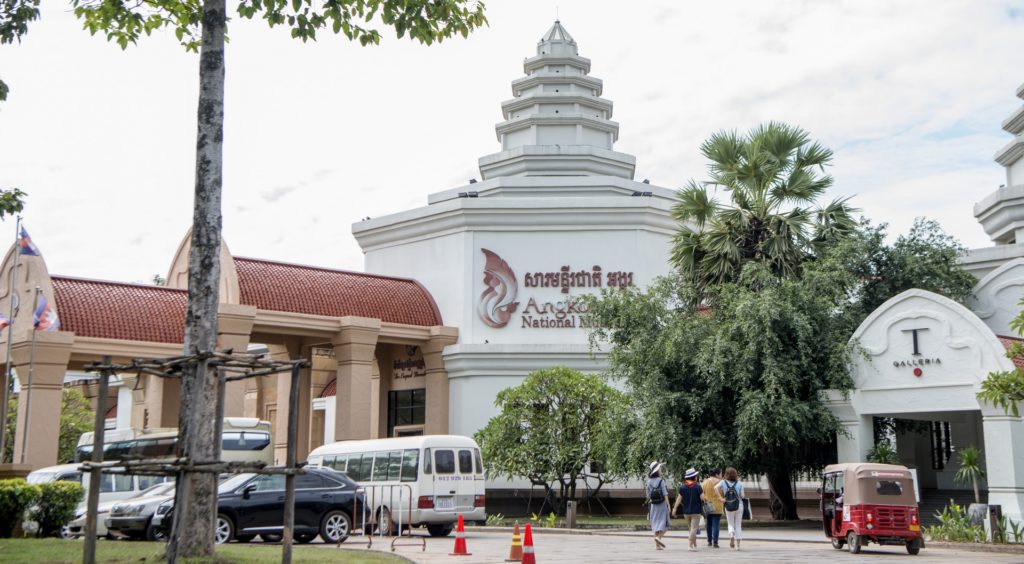National Museum in Siem Reap – the museum houses a large number of statues from Angkor
For visitors who are particularly interested in the history of Cambodia and the Khmer Empire, a visit to the Angkor National Museum Siem Reap is worthwhile. This is located directly in the city of Siem Reap and has set itself the task of collecting artifacts from the Angkor heyday, preserving them and making them not only accessible to interested parties, but also preparing them accordingly. Precisely for this reason, the museum is a popular destination for tourists: this is also noticeable. Meanwhile, guided tours (either in persona or as audio guides) are offered in numerous languages, including German.

A visit to the museum is a perfect complement to exploring the various temples of the Khmer Empire, as the exhibits are also primarily those taken from the archaeological sites of Angkor.
The museum has existed since 2007 and is divided into different galleries (divided into categories such as “The Great Kings of the Khmer”, “Religion and Faith”, “The Civilization of the Khmer”, etc.). This allows visitors to immerse themselves in precisely those aspects of Khmer culture in which they are particularly interested.
Interestingly, the museum is privately run: The artifacts, however, are on loan, for example, from the Cambodian National Museum in Phnom Penh or the “Conservation d’Angkor,” which is subordinate to the Cambodian Ministry of Culture and has the task of preserving the country’s archaeological and cultural treasures.
What many Cambodians find critical about the museum, however, is the fact that the owners are from Thailand, so the profits from “their” cultural treasures do not remain in the country. This assessment is not surprising if one takes a closer look at Cambodian history: the numerous occupations that the country has already experienced, and also the many art thefts by European explorers in the 19th and 20th centuries, make the desire for free disposal of the artifacts of their own history seem more than understandable.
In addition to the permanent exhibition, the museum also offers special exhibitions and events from time to time. Therefore, it is definitely worthwhile for visitors to take a look at the operator’s website in advance in order not to miss anything here and to be able to plan accordingly. Due to the numerous exhibits and artifacts, it makes sense to plan a few hours for a visit in order to be able to explore all areas of the museum extensively. Should the time budget be a little tighter here, the division of the exhibition into the different thematic areas helps a lot with the orientation, which areas you might prefer to visit and which areas you might only want to visit superficially. All in all, the visit is clearly recommended to learn more about the history of the country.